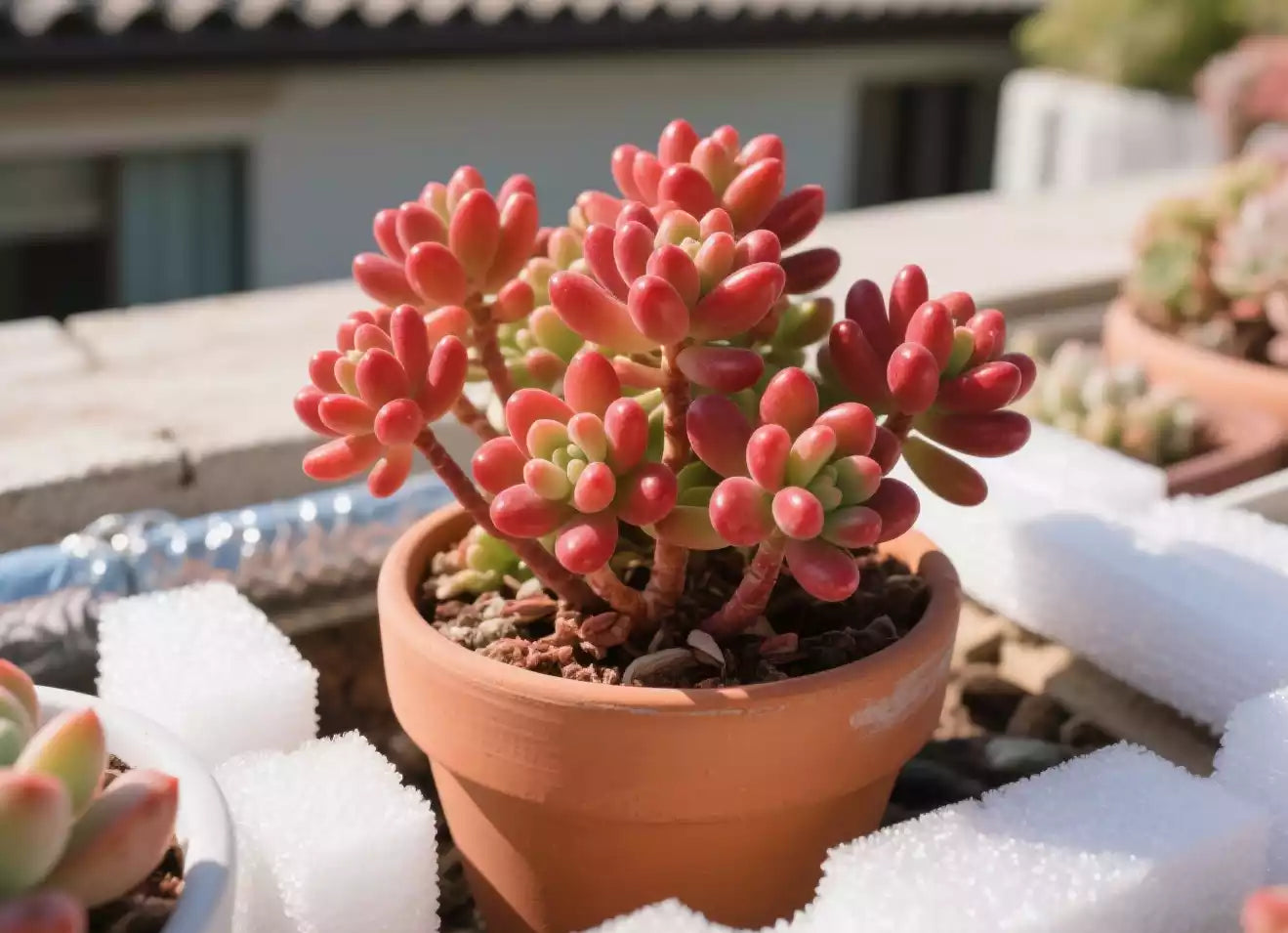
Full sun for succulents: A guide to prevent damage
Have you ever walked past a garden store and been captivated by the round, plump succulents? But once you bring them home, you might notice that their once plump and adorable leaves start to wilt and lose their vibrant color. This is likely because they haven't been given the right amount of sunlight. Today, we'll discuss how to provide your succulents with the perfect amount of sunlight in your yard, on your balcony, or even on your windowsill so that they can thrive.
Succulents' "Sunlight Preferences"
Generally, most common succulent varieties require 4–6 hours of direct sunlight daily. For example, popular Sedum succulents thrive with ample sunlight, which makes their leaves more compact and plump, and their colors more vibrant, showcasing charming hues of red, pink, and purple.
However, some varieties are relatively shade-tolerant, such as those in the Haworthia genus, including Haworthia heidelbergensis and Haworthia truncata. These plants originally grew in rock crevices or under the shade of other plants, so they have less stringent light requirements. If exposed to excessive direct sunlight, their leaves may become grayish, shriveled, and lose their translucent texture. Such succulents only need 2–4 hours of gentle light or diffused light per day.
Seasonal Adjustments to Light Exposure
Seasonal changes impact the light requirements of succulents. In spring and autumn, when sunlight is milder, it is the peak growing season for succulents, so they can safely enjoy ample direct sunlight to promote growth and coloration. In the summer, in addition to providing shade and cooling, succulents can be exposed to gentle sunlight in the early morning or late evening. In winter, succulents should be placed in a warm, well-lit location to help them survive the cold season safely.
Tips for Balancing Indoor and Outdoor Light
If you plan to grow succulents indoors, a south-facing window is the ideal location, as it receives the most direct sunlight for the most extended period each day. However, note that glass filters out some UV rays, which may affect coloration. In this case, consider using specialized plant grow lights. Additionally, rotate the pots every few days to ensure even light exposure from all directions and prevent the plants from growing crooked.
If you are growing succulents in the yard, first plan the planting area. Plant succulents that prefer ample sunlight in south- or west-facing areas, while shade-tolerant varieties can be placed under trees, along walls, or in other partially shaded environments. If you are growing succulents in pots, they can be easily moved, allowing you to adjust their position flexibly as light and weather conditions change. For example, during sudden heavy rain, promptly move the succulents indoors to avoid excessive exposure to rain; on days with insufficient sunlight, move them to a sunnier location.
Signals of insufficient or excessive light
Succulents will indicate whether the light is appropriate through changes in their appearance. When light is insufficient, they may exhibit "leggy growth," with elongated stems, wider spacing between leaves, and paler colors. Leaves may also become thin and soft, losing their original plumpness. At this point, you should immediately increase their light exposure!
Conversely, if light exposure is excessive, succulent leaves may develop sunburn spots, become dull in color, or even wither and fall off. Once these issues are detected, immediately move the succulents to a shaded, well-ventilated area to acclimate them. Once they recover, readjust the light environment.
Now you have mastered the "golden rule" of light for succulents. Go check your succulents at home to see if their "sunbathing" is adequate, and let these adorable little plants shine with their most charming glow in your home!
Share